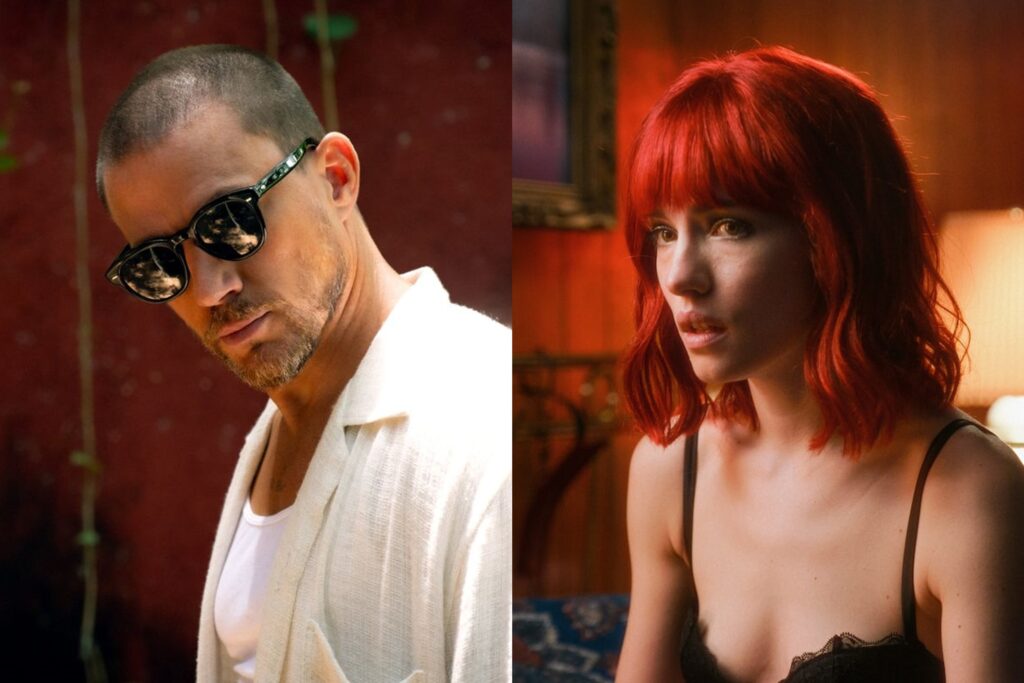
Movies are built for catharsis. Regardless of genre—the romantic comedy’s race through the airport, the murder mystery’s unmasking of the killer, the sports picture’s big game—cinematic endings are designed to cash the checks that their films have spent the past two acts writing. The paradox of this construction, at least when it comes to the modern thriller, is that most directors are more skilled at building tension than unleashing bedlam. Auteurs such as Ari Aster, Osgood Perkins, and M. Night Shyamalan (to name a few) are all capable craftsmen, wielding their razor-sharp technique to amplify our unease, but while they’re skilled at manufacturing suspense, they often struggle to pay it off in ways that are genuinely unpredictable or exciting.
Last weekend saw two new releases acutely vulnerable to this common pitfall. One tumbles into it. The other does its best to evade it, partly by rewiring its chronology. At the risk of evoking that head-tapping “Roll Safe” meme, your third act can’t ruin your movie’s ending if it arrives in the first 15 minutes.
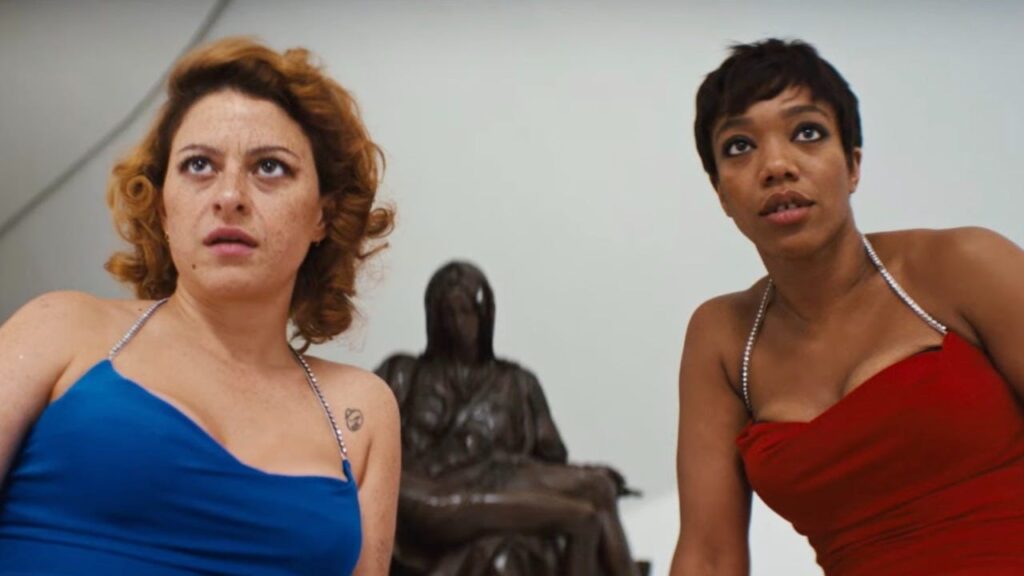
We’ll get to that. In terms of structure, the more conventional of this pulse-pounding double feature is Blink Twice, though it can hardly be deemed staid. The directorial debut of Zoë Kravitz, it’s a nightmare disguised as a dream, taking place in a paradise that doubles as a prison. The owner of its heavenly wilderness is Slater King (Channing Tatum), a disgraced tech bro who’s attempting to rehabilitate his image following an unspecified incident. “I bought an island,” he tells an obsequious talk-show host (the movie’s initial title was Pussy Island), and while schmoozing at a high-society function, he invites our heroine, Frida (Naomi Ackie), to join him and his friends for an impromptu vacation. Frida is working catering gigs while pouring her heart into her online hustle, a creature-themed fingernail-painting concern called Anailimals; suffice it to say that when a handsome billionaire offers her the chance to sun herself in the lap of luxury, she doesn’t hesitate.
One of the pleasures of Blink Twice lies in how, even as it basks in ostensible contentment—the perfect weather, the fabulous meals and clothes, the regular indulging of “fat blunts”—it scarcely hides its underlying unease. Kravitz, perhaps having picked up a few tricks from Steven Soderbergh during their work on KIMI, persuasively creates an atmosphere of frolicsome delight that’s nonetheless tinged with an aura of indefinable wrongness. A cigarette lighter keeps disappearing. Dirt crops up under Frida’s fingernails. The men constantly ask the women, with a hint of insistence, if they’re having a good time. And poisonous vipers slither through the grounds. When Frida’s best friend, Jess (Alia Shawkat), wonders whether the human sacrifice will be performed before or after dinner, it’s a cute line that doubles as a wry piece of lampshading.
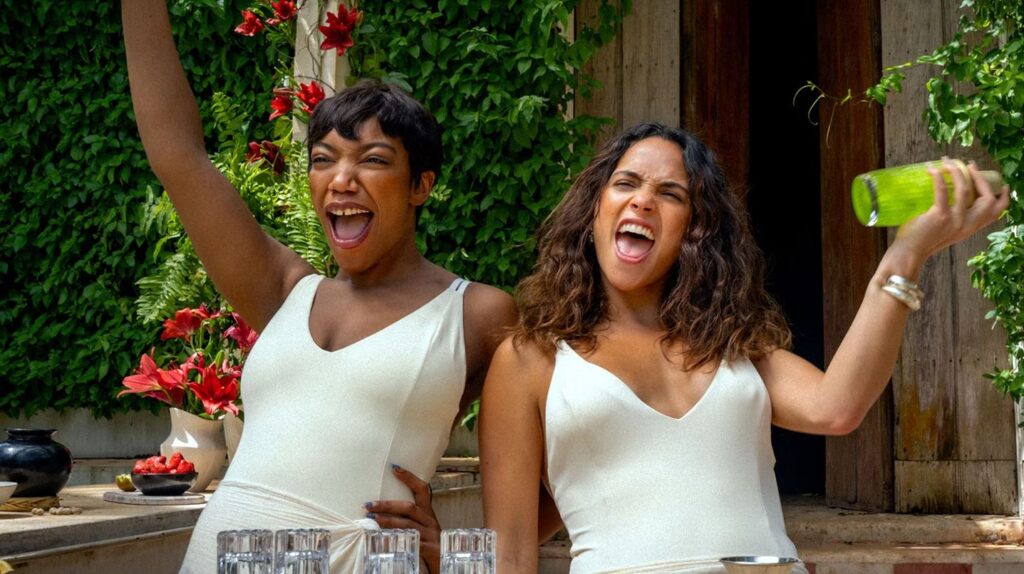
As a matter of genre, Blink Twice might be labeled a “Bliss Is Amiss” picture, inviting comparisons to recent heady efforts such as Fresh, Don’t Worry Darling, and (most obviously) Get Out. Kravitz constructs the movie like a glossy house of cards—a meticulously arranged presentation that’s continually on the verge of collapsing into chaos. This is most evident in the editing, which is intentionally, pleasingly disorienting; scenes tend to terminate before they’ve fully played out, day and night seem interchangeable, and specific images—shots of women inhaling drugs or traipsing in white gowns across a finely manicured lawn—are repeated to unnerving effect.
The screenplay, which Kravitz wrote with E.T. Feigenbaum (who worked on her short-lived TV adaptation of High Fidelity), eventually resolves to clarify these obscurities, at which point the movie becomes more lucid and less interesting. The actors are all fine; Ackie is a sympathetic center supported by an appealing Adria Arjona, while Kravitz has rounded out Slater’s entourage with a who’s-who of smarmy white dudes, including Christian Slater, Simon Rex, Haley Joel Osment, and Kyle MacLachlan. (Geena Davis is also on hand, for reasons that remain unclear to me.) But as Blink Twice pivots from enigmatic mood piece to blood-soaked revenge flick, its sense of intrigue and possibility is replaced by bluntness and tedium. Kravitz displays great facility in setting the scene, but her putatively energetic set pieces prove to be obvious and even perfunctory.
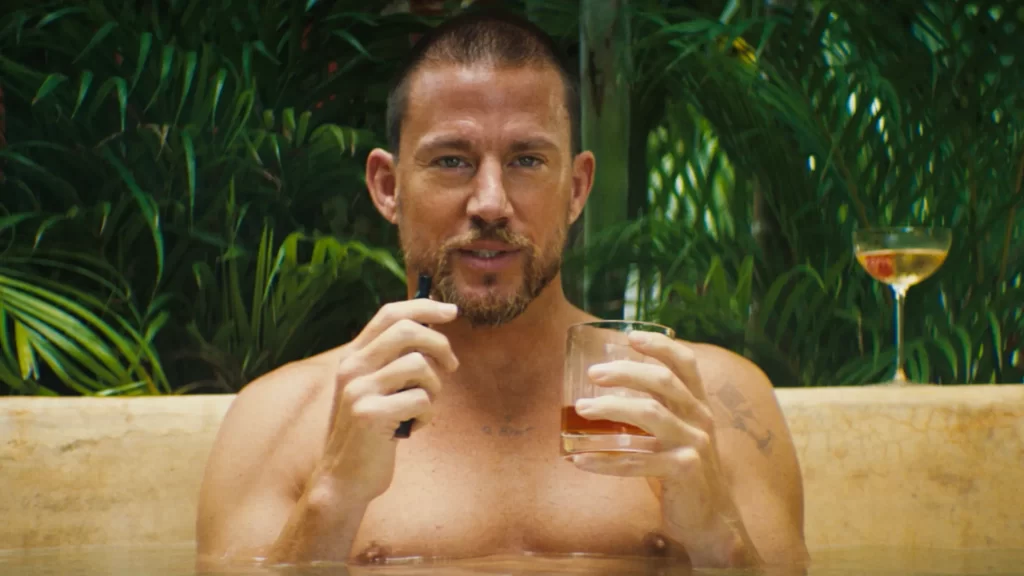
Perhaps her heart is more invested in diagramming her themes than in executing her story. The film’s script offers a cogent and meaningful take on The Issues Of Today: the illusory nature of cancel culture, the pervasive danger of sexual violence, the entrenchment of male power. Important concepts, sure, but Kravitz might have conveyed her message with greater force if she’d paid more attention to staging her mayhem.
As it stands, Blink Twice perfumes itself in a curious irony, given that its most memorable presence is Tatum, who imbues Slater with a megawatt charisma that’s slick, seductive, and predatory. A scene where he mocks the notion of public apologies represents the movie’s clearest articulation of its ideas regarding privilege and resentment. If he’s a villain, he ponders, whose fault is that? Look what you made him do.
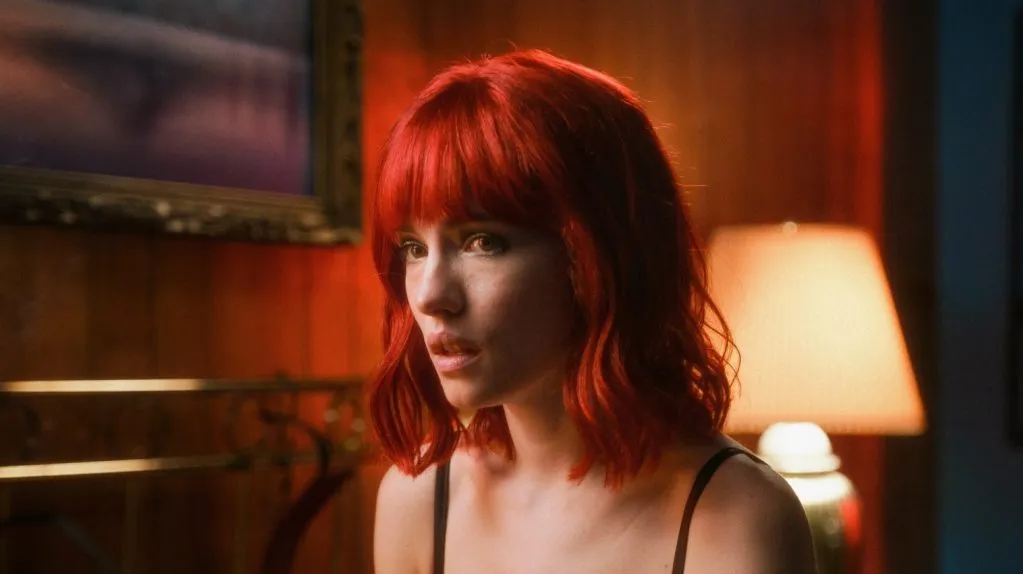
If Blink Twice’s entertainment value rises and then falls, Strange Darling maintains a more impressive level of consistency, even as it snakes along in a figure eight. The work of writer-director JT Mollner, its opening title card announces it as “a thriller in six chapters”; it then begins in the middle before regularly leaping forward and backward in time. This might not be an especially novel conceit—Mollner owes more than a minor debt to Quentin Tarantino—but endemic in its fractured chronology is the ability to avoid the third-act problems that plague so many genre pictures. Rather than conforming to the typical pattern—the sustained build-up followed by the inevitable letdown—it toys with the expected trajectory, keeping your mind racing and your heart pumping.
Of course, the order of events on display would be meaningless if they weren’t depicted with such bravura style. Mollner’s filmmaking may be self-conscious, but it’s also arresting, with bold colors, fluid camerawork (the cinematographer is none other than Giovanni Ribisi), and an abiding sense of panache. Straight from the striking opening shot—the black-and-white image of a man smoking a cigarette and reacting impassively as an offscreen woman asks him, “Are you a serial killer?”—we’re confident that we’re in the hands of a director who knows his way around pulpy material.
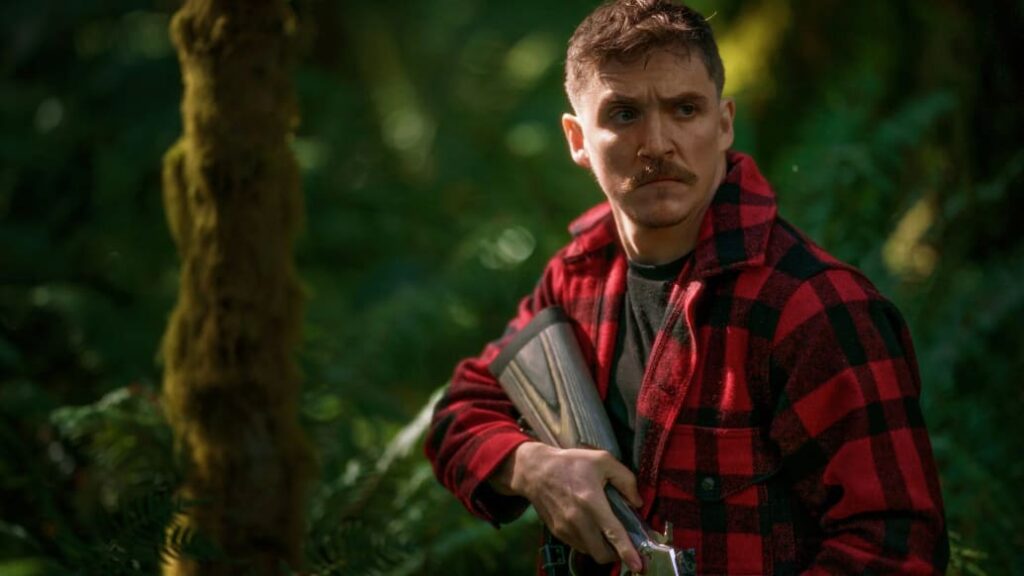
That imposing man is credited as The Demon (Kyle Gallner), and the next time we see him the description sure seems apt, given that he’s rampaging down an Oregon highway in a black pickup while funneling cocaine into his nostrils. The vehicle he’s chasing, a cheery red Pinto, is being driven by The Lady (Willa Fitzgerald), a terrified-looking woman with a mane of blond hair, a red jumpsuit, and a profusely bleeding ear. The pretzel-shaped narrative that follows explores both how she got herself into this predicament and the extreme measures she takes to extricate herself from it.
As a piece of craftsmanship, Strange Darling is both supple and invigorating—a flashy, adrenaline-fueled cocktail that’s also smooth and even intimate. (Example: the way it pauses for that classic moment where an injured character stifles a scream while pouring alcohol on an open wound.) Yet for all its sprints through the woods and chases across the roads, its thorniest scenes play out in the darkened motel room where the Lady and the Demon have travelled for a forbidden, freighted one-night stand. Clothed more in neon lighting than actual garments (the Lady’s red wig contrasts vividly against the establishment’s electric-blue sign), they negotiate a complex pantomime of BDSM that persistently dances on a knife’s edge between playful choreography and genuine cruelty.
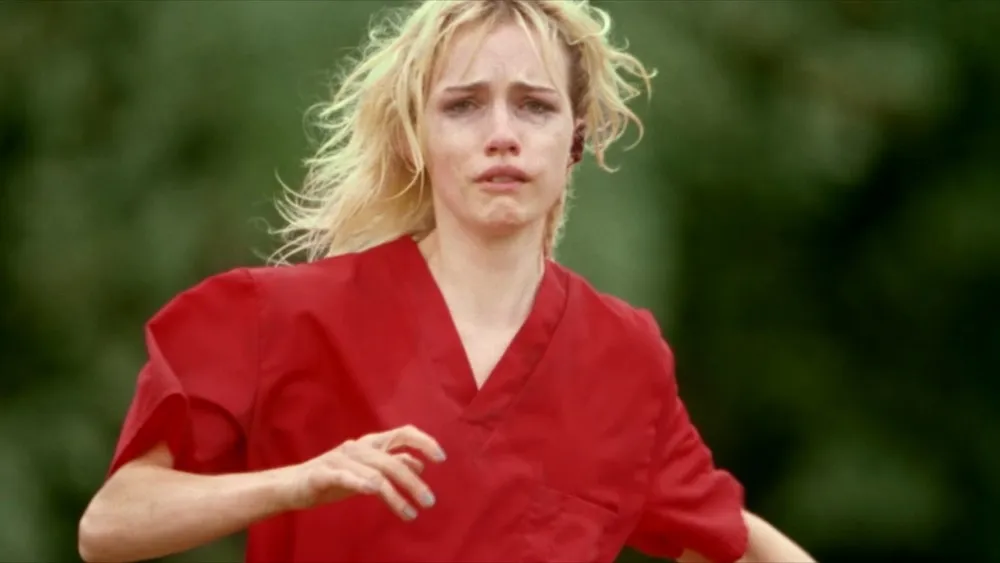
These passages are tense, engaging, and—as a matter of sexual ideology—somewhat puzzling. Mollner’s showmanship is provocative (hey look, a split diopter!), but his grasp of gender politics is less sure-handed; he appears to be trying to subvert your expectations and perhaps rattle your sensibilities, yet his themes are less confrontational than vague. (If the late repartee between two police officers—one a grizzled man, the other a feisty young woman—sharpens his intentions, it does so lazily.) In essence, Strange Darling represents the opposite of Blink Twice; it’s an expertly constructed set-piece machine that doesn’t have much interesting to say.
If this is a flaw, it’s a minor one, as is the fact that the movie’s last 10 minutes are its least suspenseful. (Given how many thrillers tend to devolve into banality within their first hour, I’m willing to forgive a rote epilogue.) More than anything, Strange Darling functions as a calling card for its nascent ensemble: for Mollner’s silky talent, for Gallner’s slippery physicality, and—above all—for Fitzgerald’s commanding screen presence. She delivers a decidedly high-volume performance—not just in terms of noise (though her scream-queen bona fides are legit), but for the sheer amount of stuff she gets to do. She fights and she fucks and she sneers and she pleads, and all of this stressful doing gradually coalesces into a unified portrait that convincingly balances terror, ardor, and danger. “Can you help me, please?” the Lady asks repeatedly. It proves to be a fitting refrain, as this sly, bracing thriller puts a welcome new spin on the damsel in distress.
Grades
Blink Twice: B-
Strange Darling: B+
Jeremy Beck is the editor-in-chief of MovieManifesto. He watches more movies and television than he probably should.
